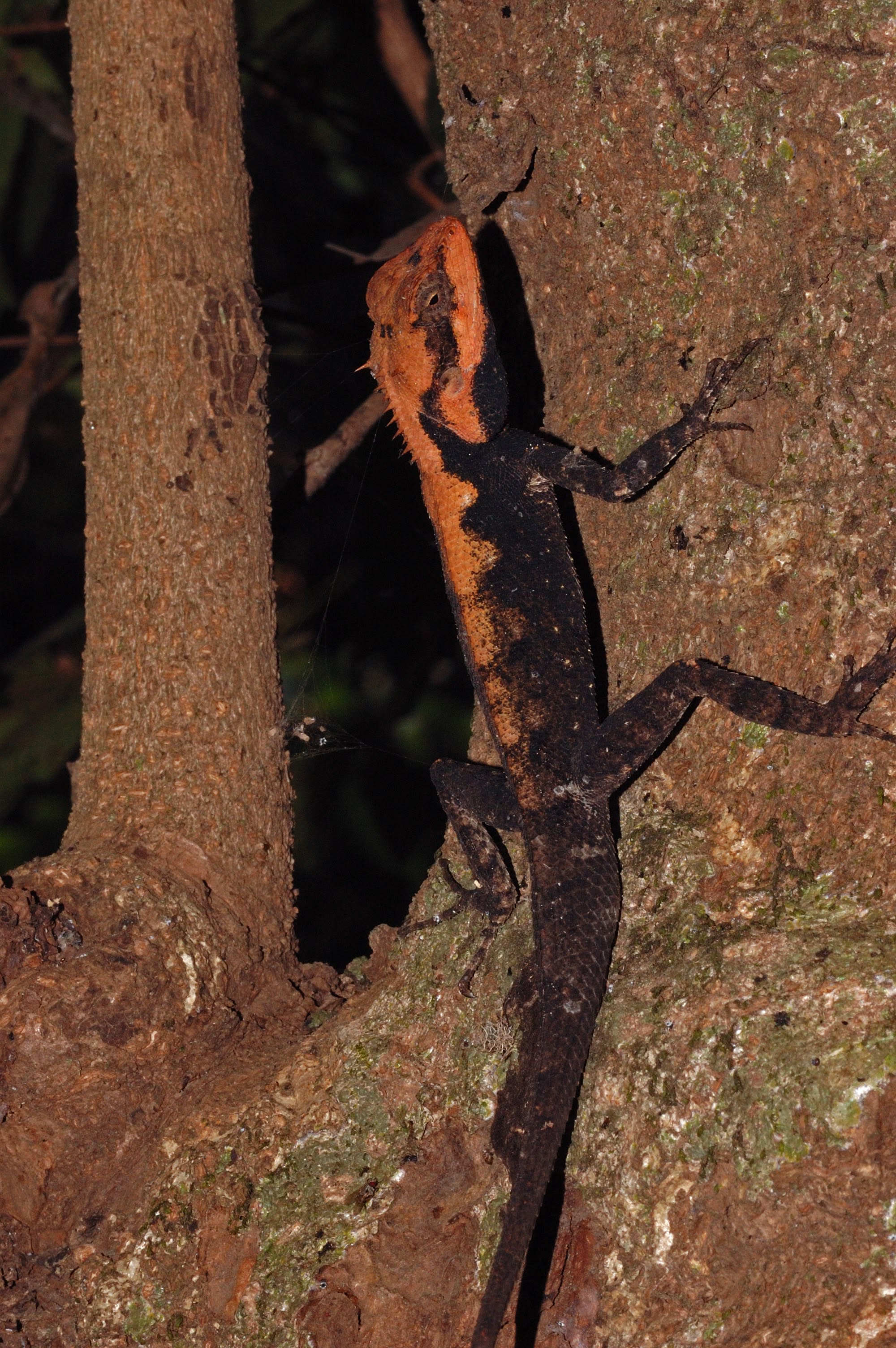 Listen to this article
•
15:34 min
Listen to this article
•
15:34 min
The loud rustle of leaves got my spider-senses tingling. An abrupt motion was followed by a quiver of the nearby foliage. Was it a snake, or some other reptile? I was on a solo walk in the marvellous forests of Agumbe in Shimoga District, Karnataka. My tingling sensation was on account of my experiences the previous night, when I had spotted three Malabar pit vipers (Trimeresurus malabaricus) in the space of an hour in the same forest area. So I was wary of these lovely, yet venomous creatures. Pit vipers are extremely well camouflaged, and the last thing I wanted to do was to step on one, clumsily.
The shiver in the bushes was followed by a leap and a scrabble up a tree trunk. It wasn’t a snake, but another equally splendid reptile, the forest calotes (Monilesaurus rouxii). An agamid lizard, the forest calotes is also variously called the Roux’s forest calotes or the forest blood sucker.
It is generally an arboreal lizard found on the edges of forests and in light forest habitats, so I was a bit surprised to find it on the ground. True to form, it rapidly climbed up a nearby tree trunk. The more familiar garden lizard (Calotes versicolor), often seen in urban gardens, is less of a forest creature than the forest calotes.
It gets its other name, forest blood sucker, because the male presents a blood-red head and black body during breeding season, the summer and monsoon months, leading to the mistaken belief that it sucks blood.
The bright red coloration is merely the lizard decking up to attract a female for breeding. The female forest calotes is a dull brown; dressing up is the domain of the male.

As I watched the forest calotes, I observed that it had an insect in its mouth, which explained why it had descended to the ground. Having caught a tasty morsel to devour, it chewed on and swallowed it. Like most lizards, the forest calotes is an insectivore, and it plays a crucial part in nature, in controlling insect populations.
A closer look at the forest calotes revealed some whitish skin on its head. When humans grow, our skin grows with us. The skin of reptiles cannot grow as the reptiles grow in size; they shed their skin in a process called moulting. The forest calotes at Agumbe was in the process of shedding its old skin, parts of which were still visible on its head.

In July 2018, the various Calotes species found in the Western Ghats underwent a taxonomic revision. The good old forest calotes, whose scientific name was Calotes rouxii, is now part of a new genus called Monilesaurus, of which there are four different species in the Western Ghats. Interestingly, the new name comes from the distinct neck fold that lizards of this genus have. In Latin “monile” means necklace and “saurus” means lizard.









